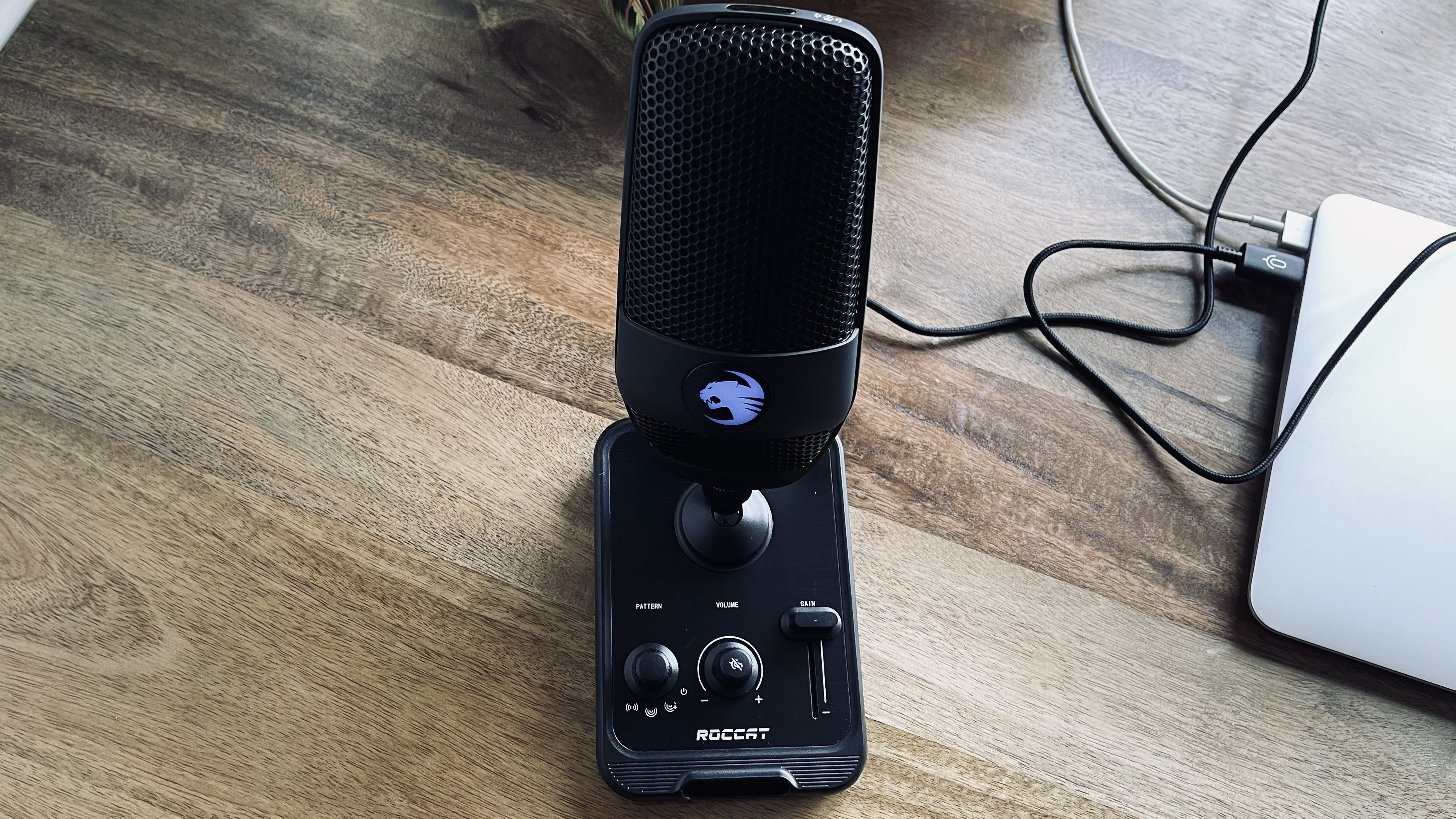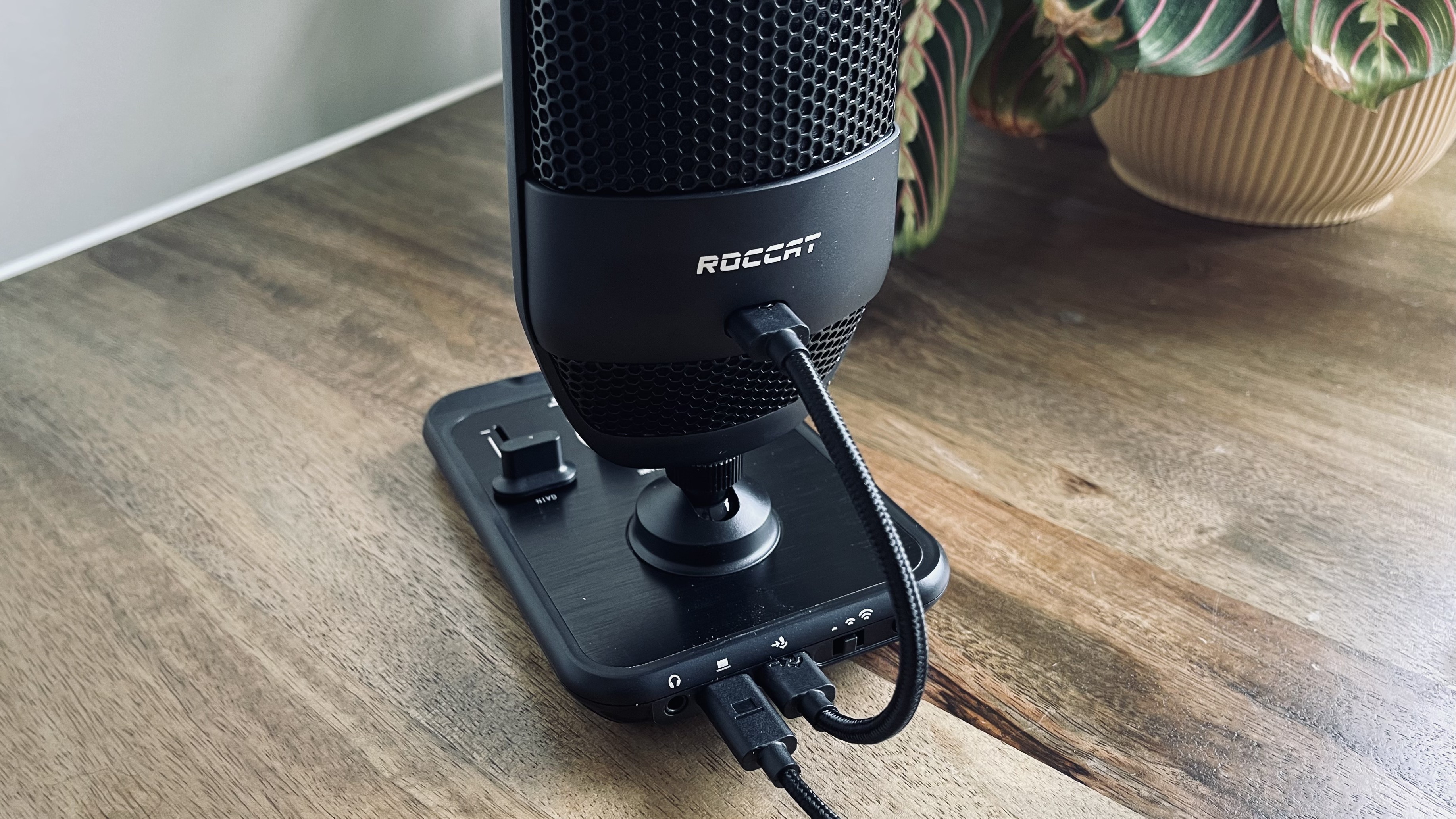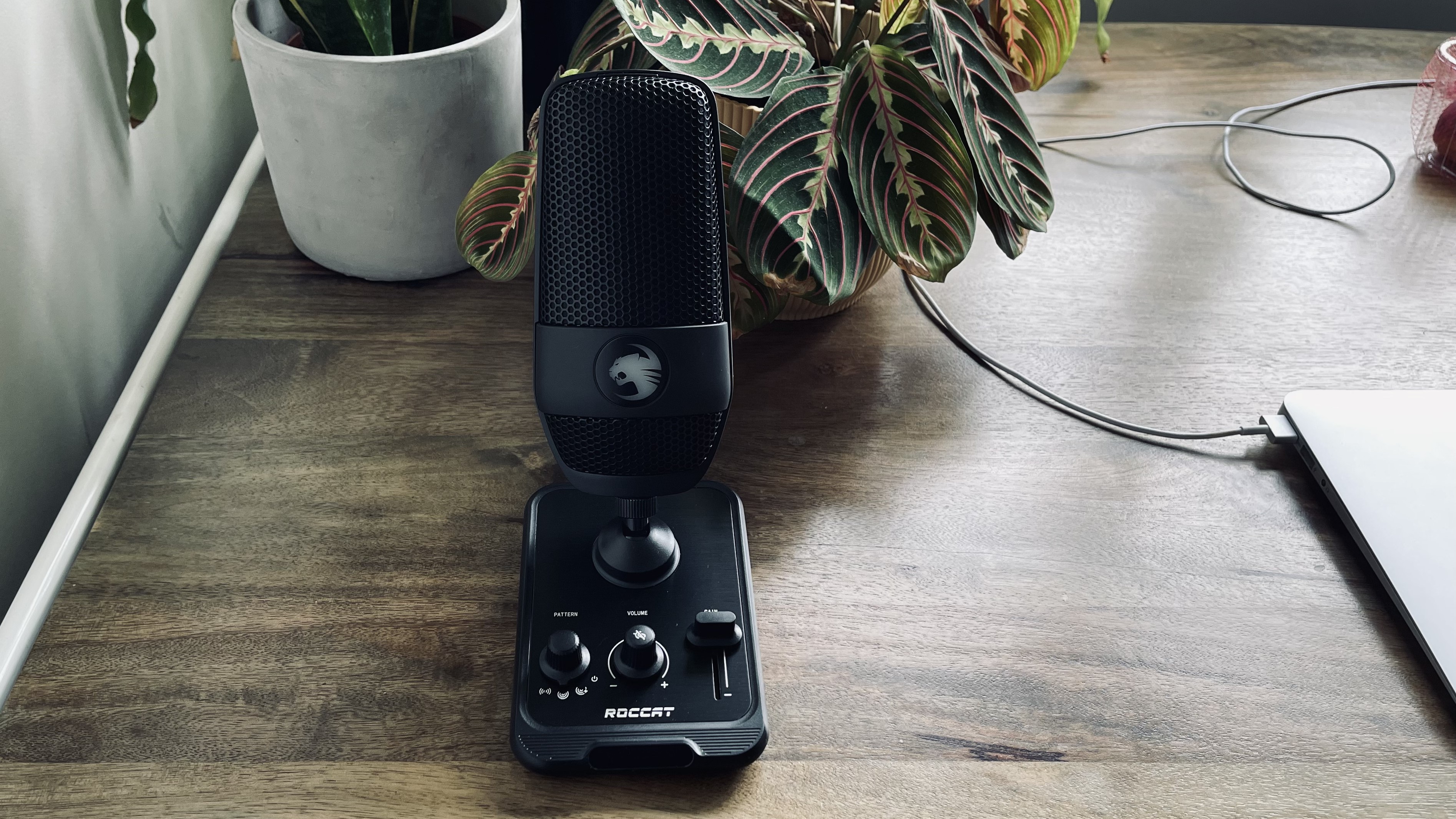GamesRadar+ Verdict
Full of unusual design calls, equally full of functionality. A solid budget option.
Pros
- +
ALL the features
- +
Solid sound reproduction
Cons
- -
Do you need TWO mic mute controls?
- -
Unusual looks may divide opinion
Why you can trust GamesRadar+
Had the Roccat Torch emerged from the hardware brand's labs five years ago, we’d all have been reduced to incredulity by such sound quality and functionality for under £100/$100. Today, though, we’re spoiled. We’re finicky. We wonder whether quite this many cables and dials are required to achieve the aforementioned great sound.
Off in other corners of the gaming peripheral arms race, the pace of progress is comparatively slow. Manufacturers of the best gaming keyboard are still dining out on the move to mechanical switches circa 2011, the best gaming mouse contenders still look and behave like mice, but for the best microphones for streaming - well, for them it’s different.

Design, features, & performance
Let’s start by inspecting what’s actually on offer with the Torch. We’ve got a dual-capsule condenser mic connected to a mini-mixer, on which sit physical controls for three selectable polar patterns, mic volume, gain, and a mic mute.
There’s also a non-touch mic mute sensor at the top of the mic itself, and a sensitivity control for that sensor at the rear of the mixer, next to a lighting intensity button. There’s a mini-jack for headphone monitoring, and two USB-C connections - one connecting the mic to the mixer, and another for the USB-C to USB cable that connects to PC.
The benefits of these mixer-style control setups are real and very welcome. You don’t need to install a full suite of software in order to simply mute the mic, for example, and need only glance down at the mixer to remind yourself of your settings. There are, inevitably, some disadvantages to this, or any, design in which controls are mounted on the mix’s base. Chiefly, that the operation of those controls might be picked up by the nearby mic, looming over your fingers like Big Brother. That’s not an issue with the gain slider (which is also deeply satisfying to play with) but the other controls do pick up when you fiddle with them.

Then there’s the cable situation at the back. There’s nothing inherently wrong with that USB-C to USB-C cable connecting the mic to the base station, it’s just a very different design to competitors. Less elegant, certainly, than incorporating an internal connection, but it comes with benefits. Firstly you can unscrew the mic from the base station and affix it to a mic stand, then use that USB-C out from the mic’s rear to connect directly to PC. Secondly, USB-C cables are easily replaceable, whereas internal connections are basically a mystery should something go wrong over time. And while it conjures images of a Sega 32X invading its Megadrive host with a miasma of cables, that’s not really the Torch’s fault. Including an adapter for different mic stand threads would have been a nice touch though, and we’d have omitted the 32X comparison if this was the case.
A quick word on the equally unusual mute situation: this might be the most comprehensive mic muting system on the market. Not only do you have two different methods - three, if you include software-level - but you even have granular control over the sensitivity of the light sensor mute. All methods work well - like the cabling, it’s just another curious bit of design to the Torch.
And such curiosities are worth befriending. Because the sound quality is clear, precise, and cuts through game audio very effectively in a streaming situation. Given its sub-£100 pricing, it’s not a surprise that it can’t look the Blue Yeti X or Shure MV7 in the eye for full-bodied, studio-style sound reproduction. But for a streamer’s needs, it’s just right and represents good company to the Seiren X and co that are found in the suite of Razer streaming gear that many might look to.

Overall
What an eccentric addition this is to the mic market - hats off for furrowing your own path, Roccat. It may not look the sleekest, or feel the most elegant to operate, but its lighting and controls make it absolutely clear at all times what the Torch is doing. A true, pretty successful, example of function over form.
Phil Iwaniuk is a multi-faceted journalist, video producer, presenter, and reviewer. Specialising in PC hardware and gaming, he's written for publications including PCGamesN, PC Gamer, GamesRadar, The Guardian, Tom's Hardware, TechRadar, Eurogamer, Trusted Reviews, VG247, Yallo, IGN, and Rolling Stone, among others.




